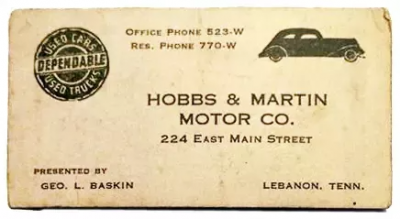Fresh Impressions: A Guide to Grocery Store Visiting Card Design
Fresh Impressions: A Guide to Grocery Store Visiting Card Design
In the highly competitive world of grocery retail, first impressions are everything. A well-designed grocery store visiting card can serve as the cornerstone for effective marketing, branding, and building a loyal customer base. It's more than just a piece of paper; it's a powerful tool for conveying your grocery store's unique identity and connecting with potential customers. In this comprehensive guide, we'll explore the art of grocery store visiting card design, offering valuable insights and tips to create a card that leaves a lasting impression while enhancing your store's visual identity and customer experience.
The Role of Grocery Store Visiting Cards
Grocery store visiting cards hold a pivotal role in the realm of retail. They are versatile and vital for various reasons:
- First Impressions: Your grocery store visiting card often serves as the first physical point of contact that potential customers have with your business. It can set the tone for their perception of your store's professionalism and trustworthiness.
- Memorability: A well-designed visiting card is more likely to be retained by customers, making it a convenient reference when they need groceries.
- Information Hub: Visiting cards serve as a compact repository of critical information. They can provide customers with essential details such as your store's location, contact information, offered services, and branding.
- Brand Image: The design and content of your visiting card reflect your grocery store's brand image, showcasing your style, values, and commitment to customer satisfaction.
Now, let's delve into the key elements to consider when designing a grocery store visiting card:
- Clarity and Simplicity: Clean and Crisp Design
A clean and uncluttered design is paramount for creating an effective grocery store visiting card.
Technique: Utilize ample white space for a clean and spacious layout. Select legible fonts, keeping the content concise and easy to understand. Avoid excessive graphics or information that could clutter the card.
Advice: Clarity and simplicity in design enhance the card's aesthetic appeal while promoting easy comprehension.
- Brand Colors: Reinforce Your Store's Identity
Incorporate your grocery store's brand colors to ensure that the visiting card aligns with your store's identity and stands out.
Technique: Base the card's color scheme on your store's primary and secondary colors. Introduce accent colors that complement your brand identity while creating a visual hierarchy.
Advice: Consistency in color choice reinforces brand recognition and ensures that the card is a reflection of your store's visual identity.
- High-Quality Imagery: Showcase Freshness and Variety
The use of high-quality images can entice customers and offer them a visual glimpse of your store's product offerings.
Technique: Integrate images of fresh produce, specialty items, in-store displays, or your store's interior. Ensure that these images are high-resolution and well-lit.
Advice: High-quality imagery not only fosters customer interest but also allows customers to visualize their shopping experience at your store.
- Contact Information: Essential Details
The visiting card should include straightforward and essential contact information to make it easy for customers to reach out to your store.
Technique: Ensure that your store's name, your name (if desired), phone number, email address, physical address, and website are included. If your store actively uses social media for customer engagement, consider adding social media handles.
Advice: Organize the contact information logically to ensure that it's easy to locate and read.
- Services and Offerings: Highlight Your Unique Selling Points
Use the visiting card to highlight the unique services, products, or offerings that differentiate your grocery store from competitors.
Technique: Provide a brief description of your store's services, such as organic produce, locally sourced goods, specialty items, home delivery, or curbside pickup. Utilize bullet points or a concise statement to convey this information.
Advice: Focus on what sets your grocery store apart from others in the area, making it more appealing to customers.
- Logo Integration: Central Element of Branding
Your grocery store's logo is central to your branding and should be prominently featured on the visiting card.
Technique: Position your store's logo prominently but tastefully. Ensure that the logo's color and proportion are consistent with your store's branding.
Advice: Your logo serves as a recognizable symbol of your brand and should be memorable to customers.
- Product Icons: Visual Representation
Consider incorporating simple icons or symbols that represent the types of products your grocery store specializes in.
Technique: Utilize small, easy-to-understand icons, such as a fruit icon for fresh produce, a milk carton for dairy products, or a loaf of bread for baked goods.
Advice: Product icons add visual interest to the card and provide a quick overview of the variety of products you offer.
- Testimonials or Customer Quotes: Build Credibility
Including testimonials or customer quotes on the visiting card can build credibility and trust among potential customers.
Technique: Choose a brief, positive customer quote that highlights your store's strengths. Place it on the back of the card, where customers can easily read it.
Advice: Ensure that the testimonials are authentic and reflect the quality of your products and services.
- Seasonal or Limited-Time Offers: Create Urgency
If your store offers seasonal promotions or limited-time offers, featuring them on the visiting card can drive customer engagement
















